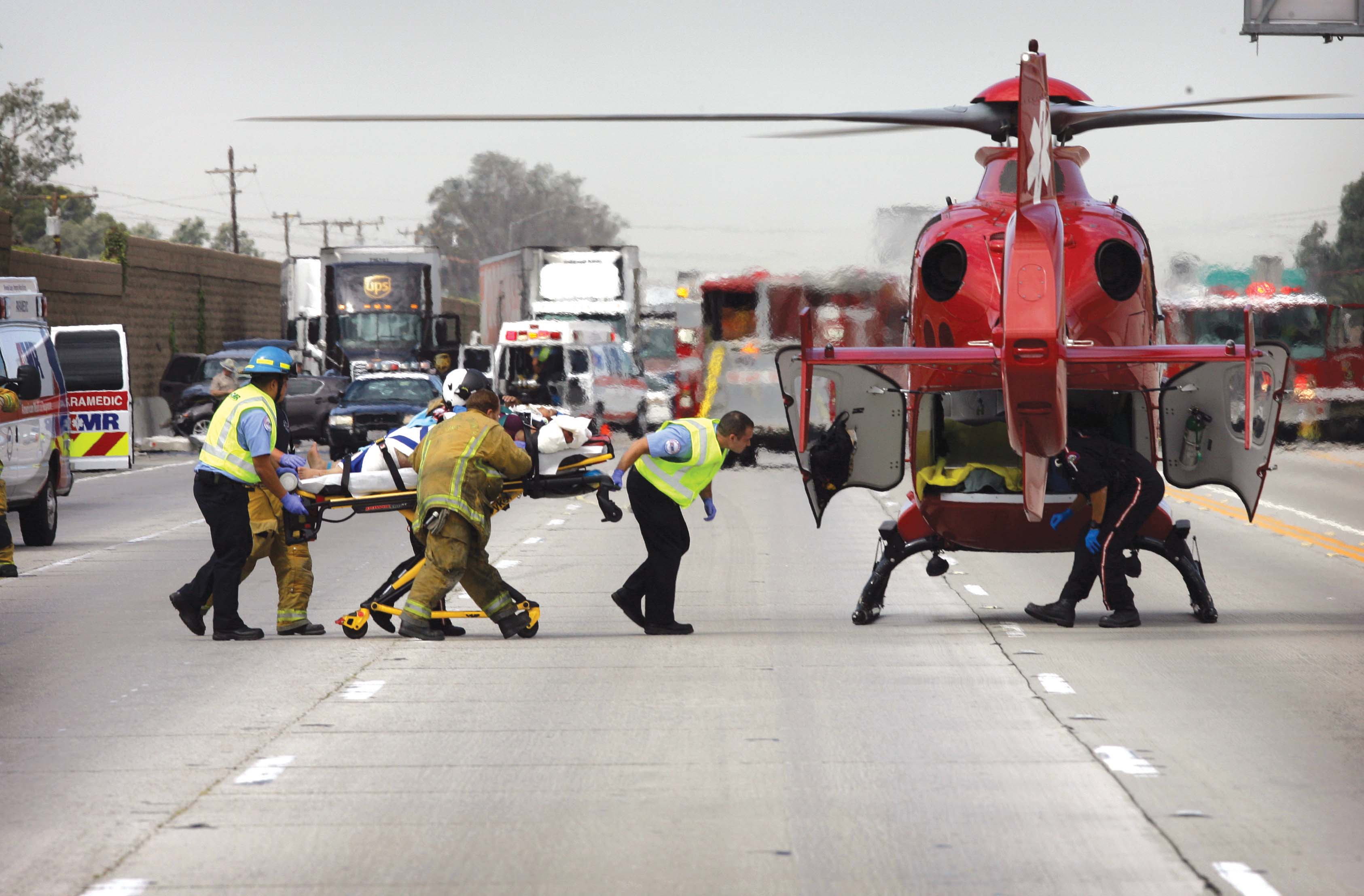The county-wide expansion of CCTV coverage in Florida Department of Transportation's District Four is detailed by Citilog's Eric Toffin

The SMART SunGuid TMC monitors traffic movements right across Florida's Broward County
The county-wide expansion of CCTV coverage in Florida Department of Transportation's District Four is detailed by Citilog's Eric Toffin
It's no secret there is a growing worldwide use of cameras by transportation departments as they develop intelligent networks to manage traffic on highways and bridges and in tunnels. One industry research note byThe growing use of video monitoring to manage traffic has introduced complexity in actually monitoring and deciphering the many video feeds. This has led to the growing use of Automatic Incident Detection (AID) software. Florida Department of Transportation's (FDOT's) District Four is as familiar with this as any DOT, as it is expanding its video-based traffic monitoring capabilities significantly. The new deployment in Florida aims to expand traffic monitoring capabilities along three major routes in Florida: Interstates 95, 595 and 75 in Broward County.
The SMART SunGuide
TMC FDOT District Four received an ITS Early Deployment Study grant from theThere are three primary steps taken at the centre to monitor and manage traffic and respond to incidents. Information collection involves constant monitoring and communications with equipment, such as cameras, and with agencies, respectively, such as the highway patrol and others, the aim being to maximise detections of incidents. At the verification and analysis stage, incidents are verified and entered into the SMART database for proper analysis which aids in determining degrees of disruptions and response plans to ensure maximum mobility. Finally, at the dissemination stage, Dynamic Message Signs (DMS) and other communications means are used to convey information to motorists. This step also involves coordination with other agencies, such as other FDOT districts.
FDOT District Four uses a mix of advanced ITS equipment to accomplish it all. DMS are used to inform motorists of incidents in real time. Motorist assistance signs are in use for the Road Ranger Service Patrol Program to aid stranded motorists. CCTV cameras are deployed to increase real-time monitoring, surveillance and first-hand incident detection directly from the TMC. Also, a video-based incident detection system is in use to alert TMC operators of incidents and crashes. FDOT was recognised as a Finalist in 2008 for Best Innovative Product or Service by ITS America, specifically for its inter-agency Video and Event Data Distribution System (iVEDDS).
An initial CCTV camera deployment
The 45 CCTV cameras initially deployed along Broward County's highways were intended to monitor traffic for incidents such as debris and crashes. It quickly became apparent that real-time monitoring of this many video inputs was stretching the operators' ability to focus and that CCTV cameras were mostly used to confirm incidents signalled to operators by other sources such as the highway patrol or road users' calls.FDOT District four was one of the first agencies to understand the benefits of video-based incident detection as a means to proactively, instead of reactively, use their CCTV cameras to detect incidents.
As early as 2006 FDOT installed an AID system to provide traffic operators with an alarm quickly after an incident occurred. A key factor in choosing a system was that all deployed cameras were Pan-Tilt-Zoom (PTZ) and FDOT preferred not to deploy additional or new fixed cameras (required by most video detection systems).
Because it required no set-up or calibration and did not require changing or adding cameras,
Other advantages afforded by VisioPaD include the ability of video detection units to operate directly on digitally encoded video feeds (as opposed to analogue NTSC signals) and the ability to supply snapshots from all connected cameras to be displayed on the FDOT District Four Smart SunGuide Website. Posts to the Website enable road users to visualise traffic conditions in real time and help to make it one of the most popular of all DOT sites.
The system was fully integrated with FDOT's statewide SunGuide Advanced Traffic Management Software (ATMS) which enables traffic operators to fully control all subsystems within the same Graphical User Interface (GUI). This GUI creates instant audible alerts and on-screen highlighting of the incident to enable rapid incident identification and response.
Results
The system has performed superbly at detecting incidents where other systems failed to do so. For example, during periods of light traffic overnight, conventional systems would not detect vehicles stopped on the shoulder of the expressway. Operators using such systems could only detect these incidents visually either through CCTV cameras or from field patrol reports. These shoulder incidents (although most often minor) can and do give rise to dangerous and life-threatening secondary collisions. The combination of a stopped vehicle on the shoulder and high-speed traffic in the adjacent lane has had fatal consequences. The ability to detect this type of incident quickly and get the appropriate emergency services on-scene has been greatly enhanced by the Citilog's VisioPaD system. Stalled vehicles also account for half of congestion on highways. Quick reporting and response to incidents decreases the duration and severity of incidents and thus reduces driver delay.Maintenance and software upgrade programmes enable the system to continually increase performance, thus making it possible for the system to manage a larger number of cameras, ensuring a high level of confidence with traffic operators.
Expanding on success
FDOT Four has now expanded its CCTV system, completing the first phase of the expansion in April 2009 by adding 52 cameras. The total addition is for an estimated 166 cameras. The full project will be built in two phases and is expected to be fully completed in approximately three years.At the heart are Citilog's service and its VisioPaD solution. The system is being expanded by Citilog's value-added reseller Fortran Traffic Systems Ltd. In addition to supplying Citilog components to FDOT Four, Fortran will also provide ongoing support during the training, deployment and warranty phases of this project.
The modular architecture of the system renders the integration of the new equipment seamless and does not require any hardware upgrade.
The system also keeps up with the enhancements and modifications of FDOT's SunGuide ATMS, enabling District Four to benefit from the latest technology advances.
"This is a significant enhancement of our existing video-based automatic incident detection system in Broward County," says Steven Corbin, ITS Operations Manager for FDOT District Four. "It will enable us to more vastly and rapidly address traffic issues like crashes, stopped vehicles and debris along limited access facilities. VisioPaD from Citilog is the solution at the heart of automating much of the real-time traffic monitoring and incident detection to help us meet our goals of reducing incident durations as part of our performance matrix."
Looking ahead Employing innovative Citilog technology for the expansion will help FDOT Four achieve its goal of a safer and more efficient roadway system for the travelling public of South Florida. Following in District Four's tracks, other districts are using the technology, such as District Five (Orlando).
"This new development will make the system even more efficient in the future while vastly expanding traffic monitoring and incident response capabilities," says Hal Worrall, Chairman of Citilog and a long-time Floridian. "With it, FDOT District Four will be well positioned to more actively address mobility hindrances across the county's highways, paving the way for safer highways and more gratified highway users."
%$Linker:












